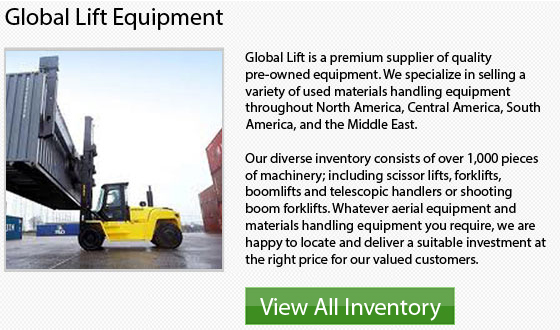
Counterbalanced Trucks: The sit down forklift is a rider truck known as a counterbalanced forklift. The counterbalance lift truck has been made in internal combustion and electric units. The lift truck is a key machine in nearly all warehouse and distribution centers and are typically capable of carrying anywhere from 2500 to 12,000 pound range depending on the particular model. Counterbalanced trucks could lift cargo to as high as 20 feet, depending upon the truck's model and weight.
Yale is amongst North America's largest manufacturers of zero emission electric forklift and is among the first producers to adopt the energy efficient AC motor and control technology. The company's continued pursuit of improved energy efficiency is affirmed by competitive testing. This testing proves that the company's 5000 pound electric rider product provides the best energy utilized per load transported or overall energy efficiency of any lift truck in its class in North America.
The spark-ignited models manufactured by Yale already meet or exceed the industry standard requirements. Yale trucks have been rated among the lowest in exhaust emissions by CEPA and EPA testing reviews. Their diesels are becoming cleaner all the time because of ongoing development with diesel engine suppliers so as to meet Tier III standards. These equipment also proactively meet upcoming Tier IV standards.
The company has also engineered their IC products for extended service intervals in order to reduce changes in oil and reducing consumption of this nonrenewable energy source for their clients.
Yale has introduced and developed an innovative and electronically controlled transmission which greatly lessens brake and tire wear from their Internal Combustion Engine forklift clients. When it comes to their electric trucks, Yale has introduced a system that recaptures energy into the truck during braking and during the lowering of cargo. This energy is then utilized once more, lessening the overall energy consumption of the truck. The company takes pride in lessening non-productive energy use throughout the vehicle by means of hydraulic system efficiency, weight reduction and patent pending, drive train components.